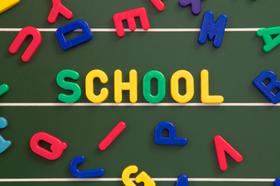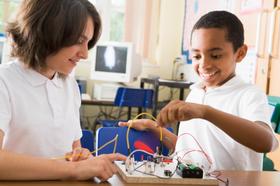Top Rankings
Reynolds SD 7 School District ranks among the top 20% of public school district in Oregon for:
Category
Attribute
Diversity
Most diverse schools (Top 1%)
Community Size
Largest student body (number of students) (Top 1%)
For the 2025 school year, there are 2 public high schools serving 2,574 students in Reynolds SD 7 School District. This district's average high testing ranking is 2/10, which is in the bottom 50% of public high schools in Oregon.
Public High Schools in Reynolds SD 7 School District have an average math proficiency score of 10% (versus the Oregon public high school average of 24%), and reading proficiency score of 39% (versus the 48% statewide average).
Public High School in Reynolds SD 7 School District have a Graduation Rate of 64%, which is less than the Oregon average of 82%.
The school with highest graduation rate is Reynolds High School, with 69% graduation rate. Read more about public school graduation rate statistics in Oregon or national school graduation rate statistics.
Minority enrollment is 76% of the student body (majority Hispanic), which is more than the Oregon public high school average of 41% (majority Hispanic).
Overview
This School District
This State (OR)
# Schools
20 Schools
371 Schools
# Students
9,552 Students
204,971 Students
# Teachers
610 Teachers
10,205 Teachers
Student : Teacher Ratio
16:1
16:1
Student By Grade
District Rank
Reynolds SD 7 School District, which is ranked within the bottom 50% of all 185 school districts in Oregon (based off of combined math and reading proficiency testing data) for the 2022-2023 school year.
The school district's graduation rate of 64% has decreased from 68% over five school years.
Overall District Rank
#173 out of 187 school districts
(Bottom 50%)
(Bottom 50%)
Math Test Scores (% Proficient)
13%
31%
Reading/Language Arts Test Scores (% Proficient)
26%
44%
Science Test Scores (% Proficient)
15%
30%
Graduation Rate
64%
81%
Students by Ethnicity:
Diversity Score
0.72
0.59
% American Indian
1%
2%
% Asian
7%
4%
% Hispanic
44%
25%
% Black
10%
2%
% White
27%
59%
% Hawaiian
4%
1%
% Two or more races
7%
7%
All Ethnic Groups
District Revenue and Spending
The revenue/student of $17,682 in this school district is less than the state median of $18,279. The school district revenue/student has grown by 8% over four school years.
The school district's spending/student of $17,310 is less than the state median of $19,325. The school district spending/student has grown by 8% over four school years.
Total Revenue
$169 MM
$9,902 MM
Spending
$165 MM
$10,468 MM
Revenue / Student
$17,682
$18,279
Spending / Student
$17,310
$19,325
Best Reynolds SD 7 School District Public High Schools (2025)
School
(Math and Reading Proficiency)
(Math and Reading Proficiency)
Location
Grades
Students
Rank: #11.
Reynolds High School
(Math: 10% | Reading: 41%)
Rank:
Rank:
2/
Bottom 50%10
1698 Sw Cherry Park Rd
Troutdale, OR 97060
(503) 667-3186
Troutdale, OR 97060
(503) 667-3186
Grades: 9-12
| 2,381 students
Rank: #22.
Reynolds Learning Academy
Alternative School
(Math: ≤10% | Reading: 11-19%)
Rank:
Rank:
1/
Bottom 50%10
20234 Ne Halsey Street
Fairview, OR 97024
(503) 667-4673
Fairview, OR 97024
(503) 667-4673
Grades: 7-12
| 193 students
Recent Articles

Opinion: Handcuffing in Public Schools is a Gateway to More Violence
Some districts are banning handcuffing, while others are cuffing kindergarteners simply throwing a temper tantrum. Read this editorial to see why this author believes slapping the cuffs on children鈥檚 wrists only leads to more behavior issues and violence in their adult lives.

Whooping Cough: Should Vaccinations be Required for Public School Enrollment?
Whopping cough is making a comeback, especially amongst children, prompting health officials to encourage pertussis vaccines and boosters. However, should the pertussis vaccine be required for public school enrollment? Learn about current proposed laws and its ramifications.

What are Common Core Standards and Why Do We Need Them?
With schools nationwide adopting common core standards, we鈥檒l take a look at what they are, their benefits, and how they will change the face of public education.





